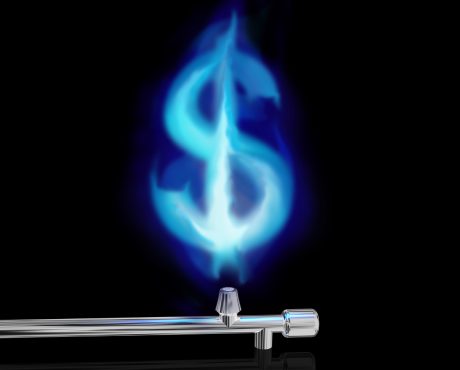Can a Double-Digit Yield Possibly Be Safe?
Every income investor wants to own high-yield stocks. And yet, in today’s market, most double-digit yielders are having a hard time finding an audience. The reason is simple: high-yield stocks are not known for their dividend safety.
In an era where a four-percent payout qualifies as high yield, it would take an extremely generous dividend policy to support a 10% payout. And if the dividend is safe, investors would rush to buy the stock, bidding up its price so that it would no longer offer such a generous yield. In other words, if a company’s yield stays consistently at a very high level, chances are the payout wouldn’t be sustainable.
But there are exceptions. Energy Transfer Partners LP (NYSE:ETP), for instance, offers investors a staggering annual yield of 13.7%. And yet it has more than enough resources to cover its payout.
Headquartered in Dallas, Texas, Energy Transfer Partners is in the pipeline business. The partnership’s portfolio consists of approximately 61,000 miles of natural gas pipelines and approximately 2,000 miles of natural gas liquid (NGL) transportation pipelines. Through ETP’s investment in Sunoco Logistics, the partnership has another 8,600 miles of crude oil and NGL and refined products pipelines.
At the same time, ETP also has more than 210 billion cubic feet of natural gas storage capacity and 51 million barrels of NGL storage capacity.
If you’ve been following the markets, you would know that due to the massive downturn in oil and gas prices in recent years, many energy companies have been struggling. In particular, because of deteriorating financials, quite a few energy stocks have slashed their dividends.
But ETP wasn’t one of them. Instead of cutting its distributions, the partnership was actually raising its payout to unitholders.
Consider that at the beginning of 2013, Energy Transfer Partners was paying quarterly distributions of $0.2725 per unit. Today, the amount has grown to $0.5650 per unit. That translates to an increase of 107%, a remarkable number given the huge industry downturn during this period. (Source: “Distribution History,” Energy Transfer Partners LP, last accessed March 19, 2018.)
The reason behind ETP’s growing distributions lies in its fee-based business. The partnership does not drill any wells; instead, it earns a fee by providing transportation, storage, and processing services for other energy companies. For instance, in ETP’s Interstate Natural Gas Transportation & Storage segment, approximately 95% of revenue comes from reservation fee contracts. By running fee-based operations, Energy Transfer Partners limits its direct exposure to commodity prices. (Source: “Morgan Stanley Midstream Energy Conference,” Energy Transfer Partners LP, February 28, 2018.)
Just take a look the partnership’s financials and you’ll see what I mean. Oil and gas prices are far from making a full recovery, but Energy Transfer Partners has no problem covering its rising distributions. In full-year 2017, ETP generated distributable cash flow of $4.19 billion, representing a 15.7% increase from 2016. Considering that it paid total cash distributions of $3.49 billion for the year, the partnership achieved a distribution coverage ratio of 1.2 times. (Source: “Energy Transfer Partners Reports Fourth Quarter Results,” Energy Transfer Partners LP, February 21, 2018.)
By having a wide margin of safety, Energy Transfer Partners makes sure that even if business slows down, the partnership still has a good chance of covering its payout.
As it stands, ETP stock’s 13.7% yield deserves a look.
